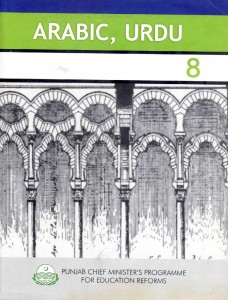Free download the Arabic 8th Class Book that was published by Punjab textbook board Lahore since January 2012.
Arabic way of life
Who are the Arabs?
Arabs are a grouping of numerous unbiased, self-identified, and self-sustained ethnicities of numerous ancestral origins, religion, and historical identities, and its individual participants are diagnosed primarily based on similarities in Language, subculture genealogical, or political grounds. Most Arabs have multiple identities with a local ethnic identity e.g. Egyptian, Palestinian or Lebanese.
These can be damaged similarly into tribal, village, or clan identities. The principal feature unifying all Arabs is the Semitic language, Arabic which has its foundation in Arabia. The Arabs aren’t an unmarried nationality despite the fact that they’ve had international locations and nationhood. There are 22 Arab countries and the Arab international crosses from Africa Asia and Europe. There are about a hundred thirty million Arabs international. (Haddad, 1999)
The Arab identity is a cultural identity that links the humans of the center of East and North Africa via language, traditions, records, and the Islamic religion. The Arab world consists of the states which are related to the League of Arab states.
Arabs identification
Within the modern-day international the Arab identity has been narrowly diagnosed with the Islamic faith. The western world regrettably believes that being an Arab way being a Muslim. But that is a mistake that they do make. The Arabs represent only a minority of the sector’s 1.6 billion Muslims. (Mohdad, 2004). In a real context, Arab identification is diagnosed independently from the non-secular context. This is as it began even before the upward push of Islam. There has been historical evidence testifying that there have been Arab Christian and Arab Jewish kingdoms within the pre -Islam duration. Even though, most Arabs today profess the Islamic faith.
Arabs can be defined based on genealogical, linguistic, and political grounds. Genealogically, an Arab may be defined as a person who can hint his ancestral origins to the unique population of the Syrian desolate tract and the Arabian Peninsula i.e. the Arabian tribes. Linguistically, an Arab may be recognized as a person whose cultural expression and primary language is Arabic and its varieties. There are individuals who reject this definition criterion on the premise of non-Arab ancestry e.g. the Egyptians (Jankowski, 2004).
There are three hundred million those who can fall below this definition. Politically, an Arab can be defined as any character who’s countrywide of a rustic with Arabic being a country-wide language or its miles one of the legit languages. It is able to also discuss with a citizen of a country that is a member of the League of Arab states. This identity although only is the most contentious because it excludes the Arabs in Diaspora and it consists of other peoples, not of the Arab starting place e.g. the Berbers of Morocco and the Somali of Somalia.
The high-quality identity of an Arab could be one who’s a citizen of an Arab nation, has a command of the Arabic language, and has knowledge of the Arab traditions that include the diverse customs, manners, and social systems of the culture (Sheehi, 2004).
Arab culture
This is an all-inclusive time period that places collectively commonplace topics and overtones located in the Arabic talking cultures (Hooker, 1999) maximum of the Arabs maintain the conventional values and morals close. The subculture of loyalty to the family is a top priority among a number of Arabs.
Maximum Arabs are Muslims and that they keep the faith as a manual to how they live their lives. The Qur’an is accompanied by all elements of their lives such as how they’re governed and the way they live their social existence. Their language is Arabic and its miles are uniform within the whole Arab world. Arabic is a completely unique and complicated language. Aish, a form of bread is the staple in most Arabs’ food regimens.
The pastoral Arab nomads who herded camels and sheep are speedy fading and they’re being changed with experts who’re working within the towns. Many Arabs are hired within the oil organizations and oil fields based totally inside the center east and other large production businesses as nicely (Barakat, 1993). The subculture of the Arab global is therefore defined through the distinct religion, art, and food.
